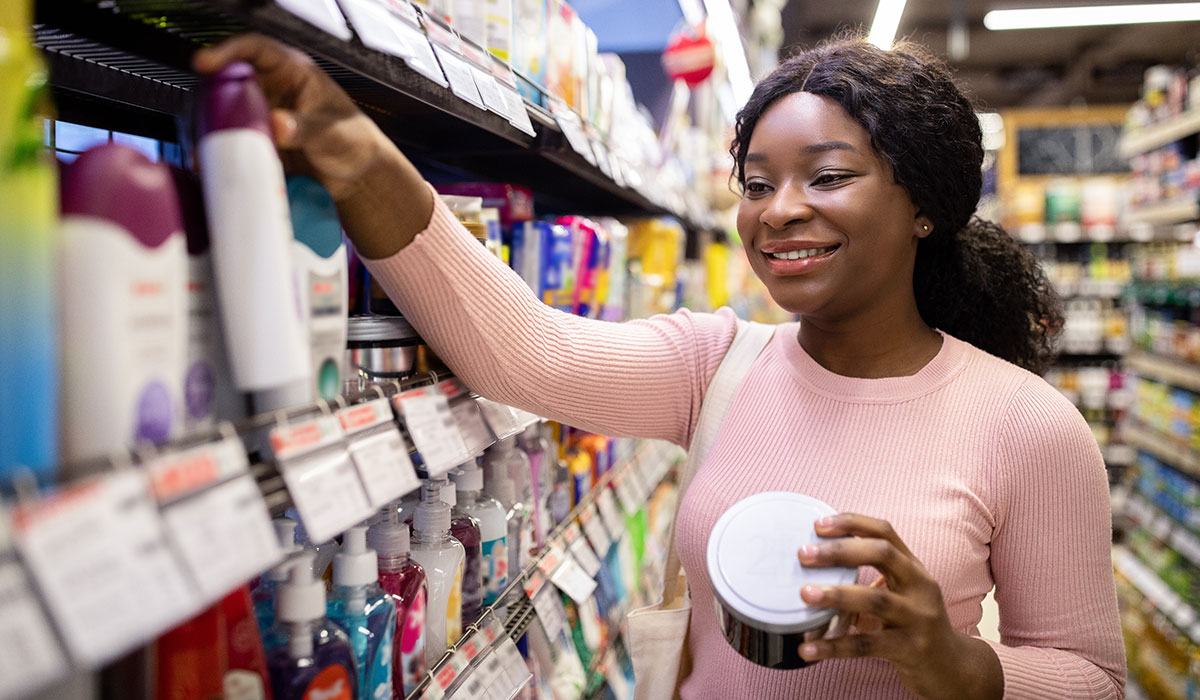By: Margaret Core, Vice President, Marketing, FMI

Nine years ago, as our two boys embarked on their high school journey, my husband and I decided to build our new home on the same street for convenience and to cherish our final years together as a family. However, with the household budget stretched thin, luxuries like window coverings were deemed an unaffordable indulgence. Then, I stumbled upon a simple yet elegant white and gold-lit paper hanging star at Aldi during my first visit to the store. Little did I realize then that this budget-friendly solution would become a cherished fixture in our home.
Fast forward to the present day and our nest is now empty as we prepare to move. With fond memories attached to the star, I passed it on to a dear friend to enjoy. I didn't anticipate the cultural phenomenon that had evolved around Aldi's middle row of goodies, now famously dubbed the "Aisle of Shame," boasting a staggering 2.5 million followers on Facebook. But Aldi is not alone in this trend.
Retail giants like Target and Walmart have embraced similar concepts to drive foot traffic and elevate the shopping experience. Target's "Bullseye's Playground" and Walmart's strategically placed "Value Bins" offer a treasure trove of discounted items, ranging from seasonal décor to household essentials, captivating customers and encouraging them to explore beyond their intended purchases.
As the retail landscape continues to evolve, the industry has a growing buzz about the interaction between general merchandise and grocery items. Retailers increasingly recognize the potential for driving incremental sales by strategically pairing these categories. This conversation has been amplified by FMI's investment in the nonfoods community, sparking discussions and innovative ideas.
Join the Conversation and Explore New Possibilities
The upcoming FMI Nonfoods Event in May and the Nonfoods Business Conference in September promise to be hubs of inspiration and collaboration. Just as I stumbled upon my beloved window treatment décor amidst my grocery visit, food retailers can captivate consumers by embracing the element of surprise, curating unique selections and enhancing the overall shopping experience.
In a world where 2.5 million followers eagerly scour GM displays for their next treasure, the potential for grocers to drive foot traffic and foster long-term loyalty is undeniable. We look forward to more ideas shared at the upcoming FMI Nonfoods Event, May 14-16, 2024 and at the education program the Nonfoods Business Conference, September 8-10, 2024. You never know what bright ideas and fruitful collaborations might emerge.

 Industry Topics address your specific area of expertise with resources, reports, events and more.
Industry Topics address your specific area of expertise with resources, reports, events and more.
 Our Research covers consumer behavior and retail operation benchmarks so you can make informed business decisions.
Our Research covers consumer behavior and retail operation benchmarks so you can make informed business decisions.
 Events and Education including online and in-person help you advance your food retail career.
Events and Education including online and in-person help you advance your food retail career.
 Food Safety training, resources and guidance that help you create a company food safety culture.
Food Safety training, resources and guidance that help you create a company food safety culture.
 Government Affairs work — federal and state — on the latest food industry policy, regulatory and legislative issues.
Government Affairs work — federal and state — on the latest food industry policy, regulatory and legislative issues.
 Get Involved. From industry awards to newsletters and committees, these resources help you take advantage of your membership.
Get Involved. From industry awards to newsletters and committees, these resources help you take advantage of your membership.
 Best practices, guidance documents, infographics, signage and more for the food industry on the COVID-19 pandemic.
Best practices, guidance documents, infographics, signage and more for the food industry on the COVID-19 pandemic.
